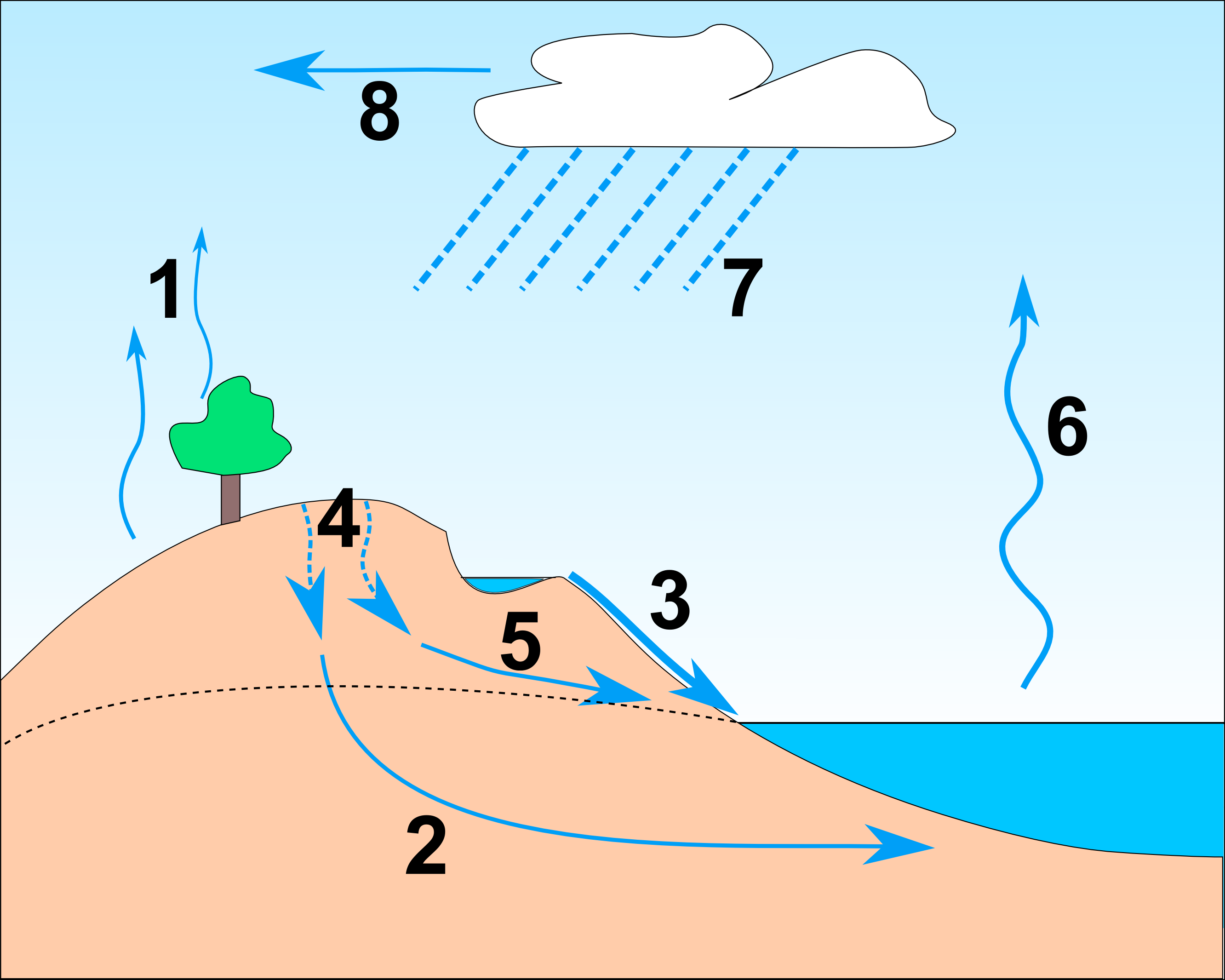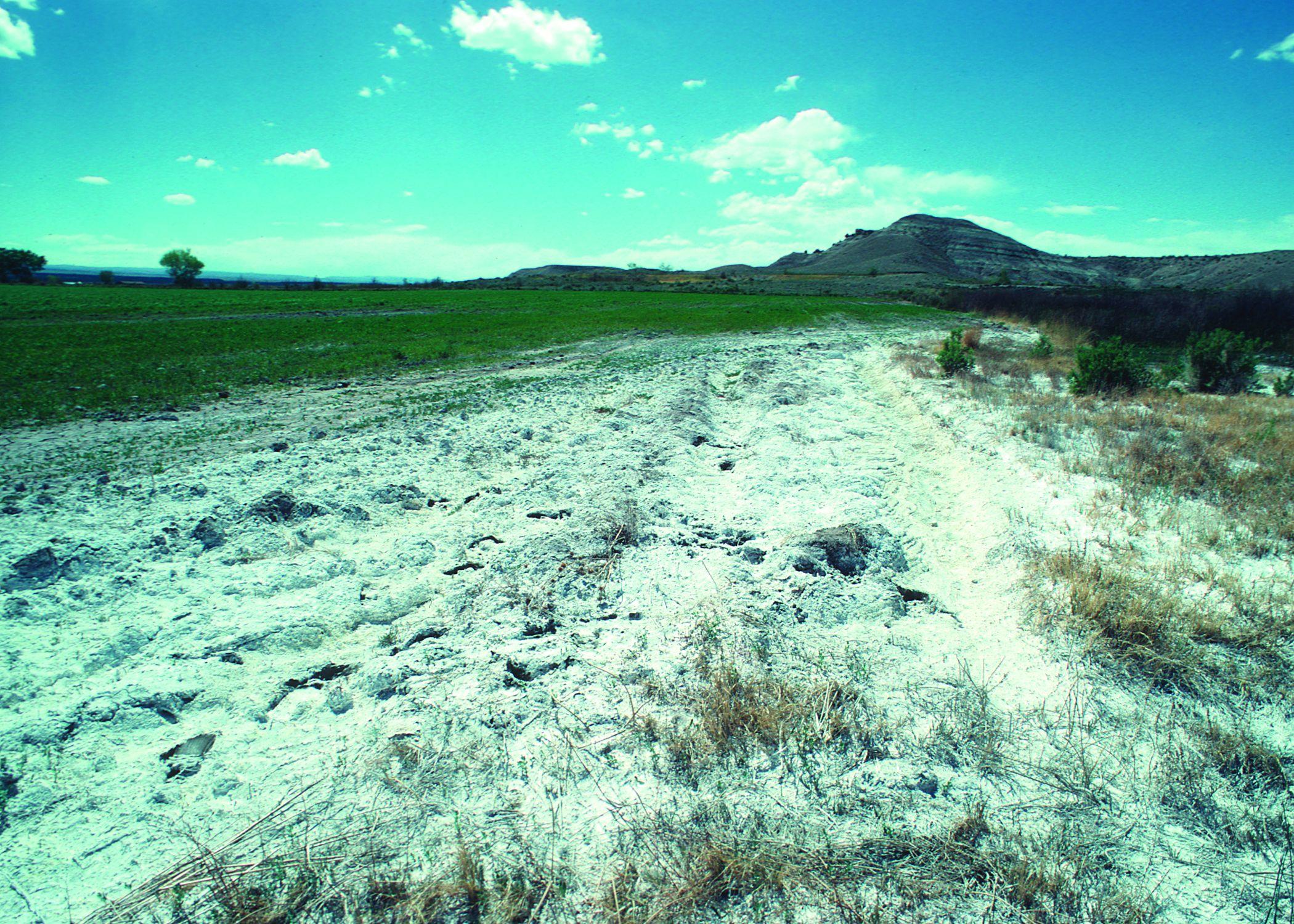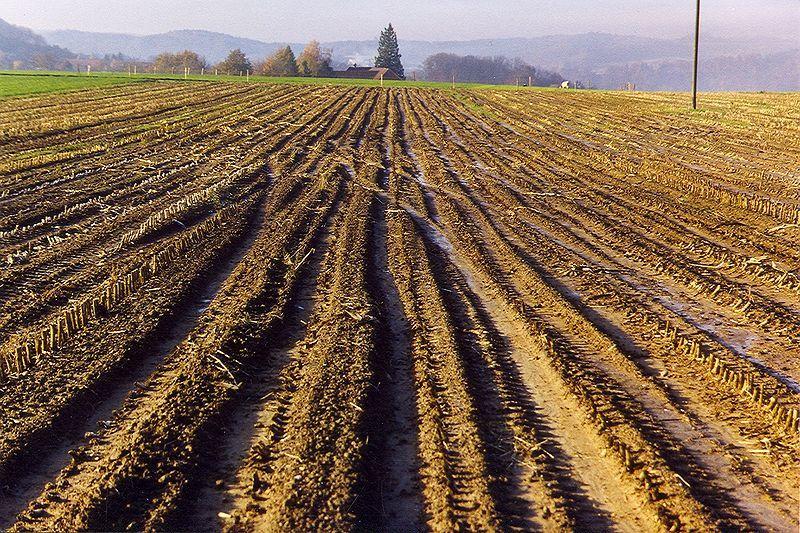Test questions: Water and the physical environment
1. Assign the numbers in the graphic to the following terms: Precipitation, infiltration, evaporation, evapotranspiration, interflow, vapour transport, surface runoff and groundwater flow.

2. What is the percentage of freshwater on the world’s water reserves (with glaciers and snow cover)? Choose the right answer.
- About 1%
- About 2.5%
- About 5%
3. What are the two nutrients which mainly control the growth of aquatic plants, algae and bacteria in aquatic systems?
4. Give a short explanation of the nutrient cycle.
5. Name at least three central functions of soils within the water and nutrient cycle.
6. The _____ of a _____ is the _____ amount of water that a particular soil can hold for _____. If there is no _____ for some time, the soil will _____ and may reach what is known as the _____ when plants will begin to wilt because of lack of _____. Fill in the words: rainfall, maximum, moisture, plants, soil, field capacity, dry out, permanent wilting point
7. Plants represent a large portion of terrestrial biomass and have a significant impact on the water cycle and the climate while water availability dictate the limits of their distribution. What is the main effect of vegetation on the water cycle and what other positive effects are associated with vegetation in the water cycle? Name at least three other positive effects.
8. What is illustrated in the graphic below? What are the probably resulting effects that can be expected regarding the water cycle? Name at least four. (Image: Cubasch et al. 2013)
9. Reducing water pollution, increasing efficiency in agriculture and saving water in domestic use are measures to increase water availability in a situation of water stress. Name at least four possibilities to achieve these goals!
10. Humans control runoff on a global scale and thus significantly modify the hydrological cycle. (True or false?)
11. One result of urbanisation is that streams carry less water or dry up when it is not raining and flood when it does. (True or false?)
12. What are human based reasons for eutrophication? Name at least two.
13. Lack of sanitation is one of the most significant forms of water pollution. In developing countries 90% of the sewage is discharged untreated directly into water bodies. At the beginning of 2016 the world’s population is estimated to be 7.4 billion. What is the percentage of the world’s population that is living without any form of sanitation? Choose the right answer.
- 17.5%
- 25%
- 32.5%
14. Less than 50% of world’s large river systems are affected by dams fortunately not the eight most biogeographically diverse. (True or false?)
15. How many dams with heights above 15 m exist worldwide? Choose the right answer.
- More than 35,000
- More than 40,000
- More than 45,000
16. On a global basis, agriculture accounts for more than 70% of all water withdrawals. (True or false?)
17. Between 30 % and 60 % of the water abstracted for agriculture is returned to rivers. What is the issue/problem with the returned water?
18. Which two types of soil degradation are shown in the following two pictures? Give a short description of these processes. (Images: Nichols, R. USDA NRCS 2011 & Prasuhn, V. 2009)
a)

b)

a)
b)
19. Name at least four human causes of erosion as well as four measures to control erosion.
20. Deforestation of tropical rainforest is increasing every year. (True or false?)
21. Arrange the following reasons in the right order starting with the greatest cause of deforestation: commercial farming, fuel-wood, legal as well as illegal wood extraction and subsistence farming.
22. What are the superordinate impacts of deforestation? Name at least four.
23. Groundwater is usually the main freshwater resource in urban areas. What are the three major ways how urbanisation is influencing groundwater?